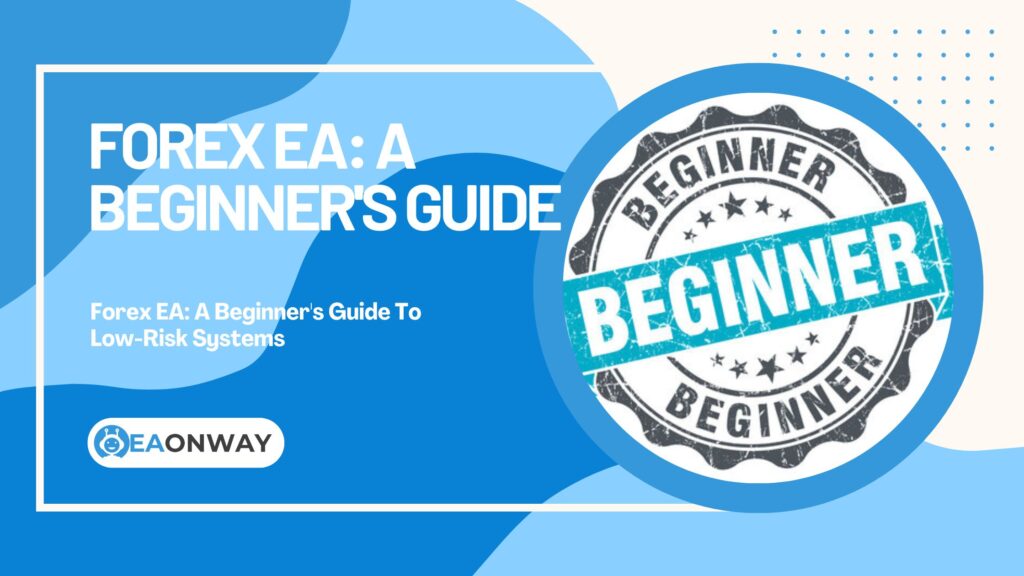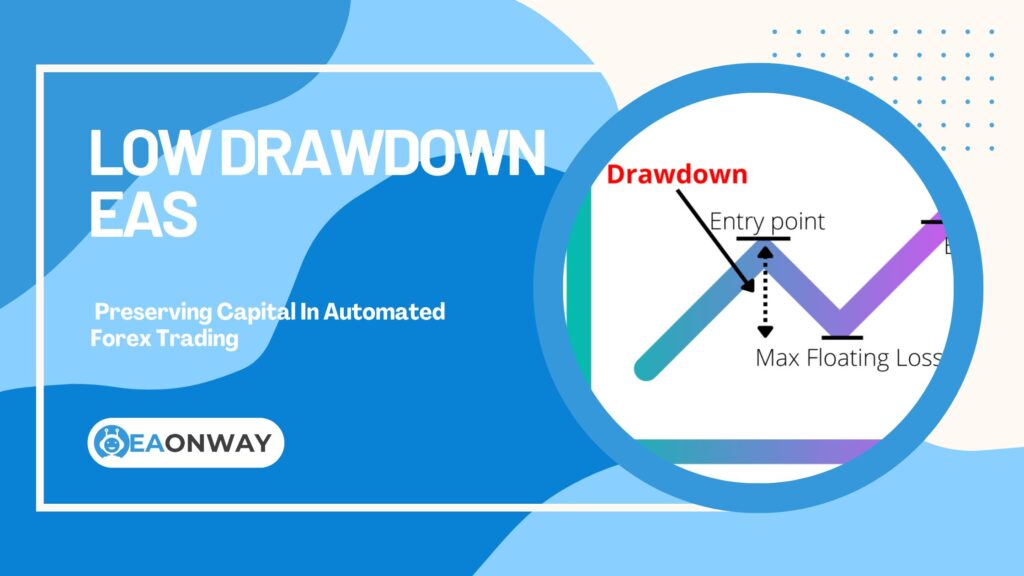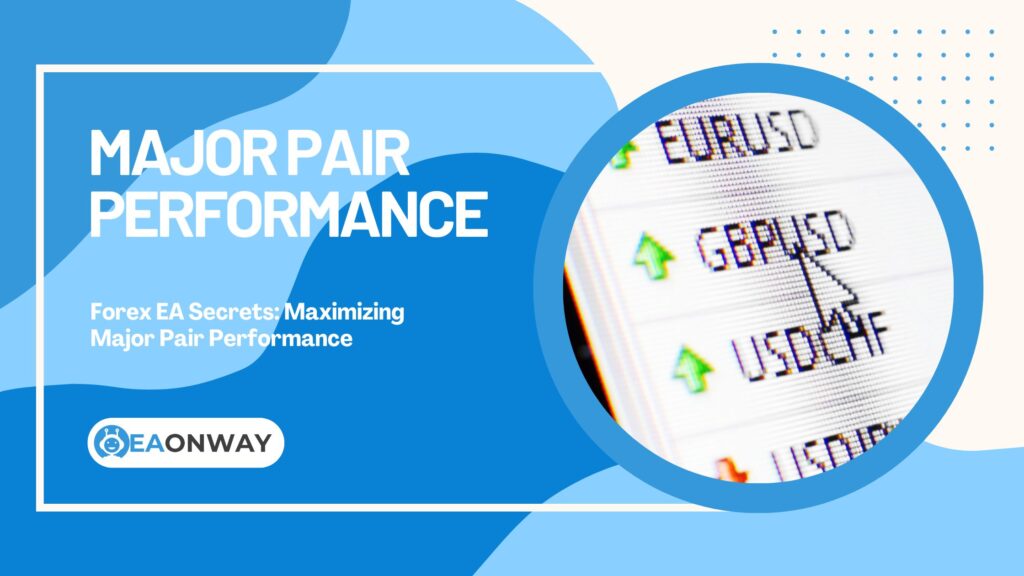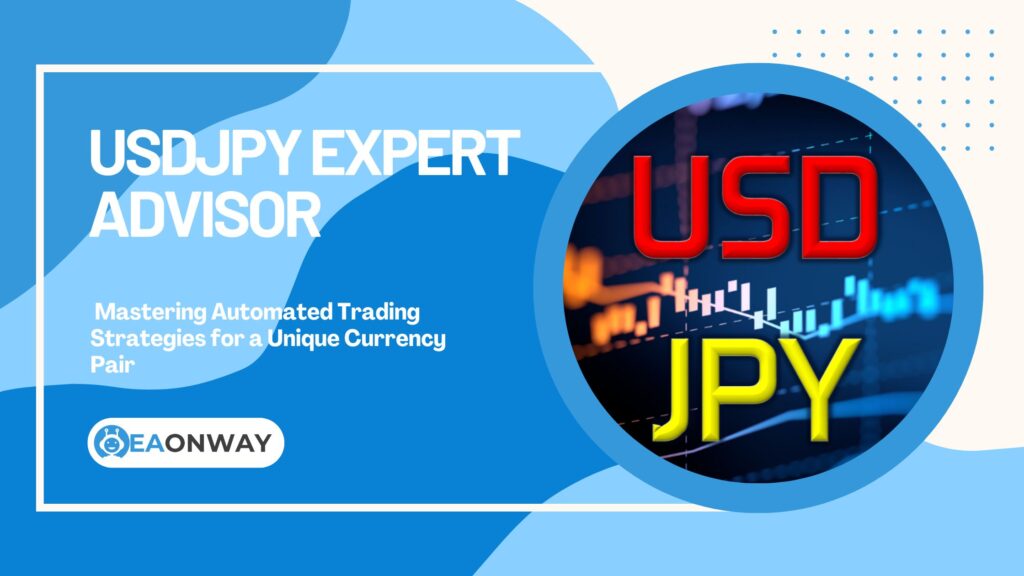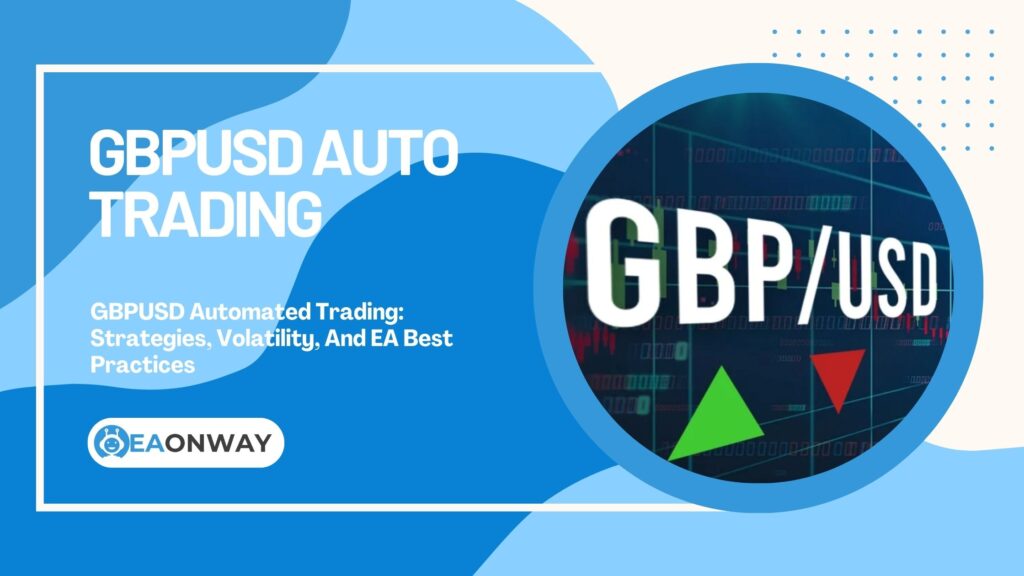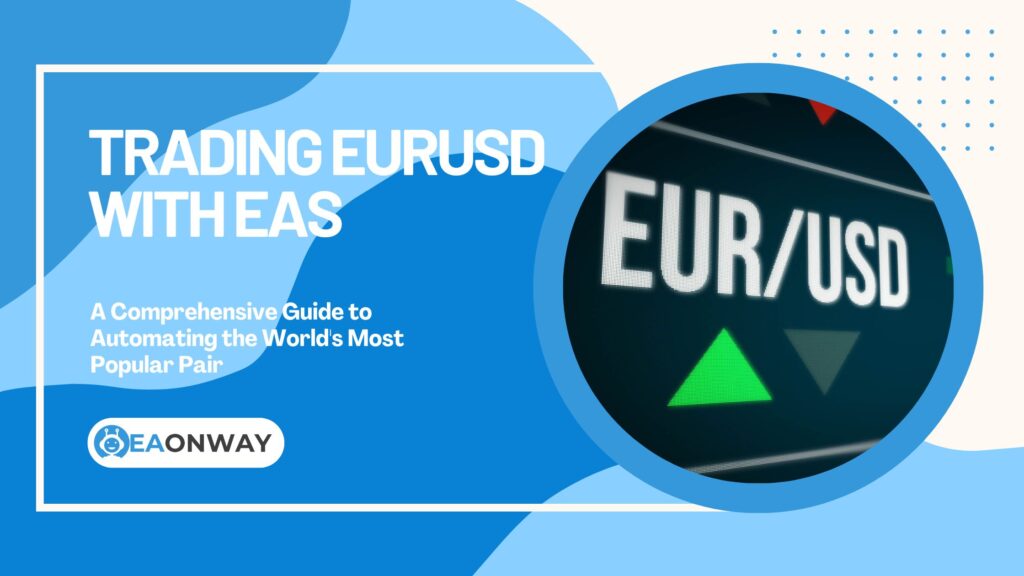Common EA Trading Strategies
Breakout Trading EAs: Identifying Explosive Market Moves and Automating Your Entries
Breakout Trading EAs: Identifying Explosive Market Moves and Automating Your Entries
Are you intrigued by the prospect of capturing sudden, powerful market surges? Many traders dream of capitalizing on those moments when prices explode, but timing these entries perfectly can be a significant challenge. This is where Breakout Trading EAs (Expert Advisors) enter the picture, offering a method to automate the identification and execution of trades during these potentially lucrative, yet volatile, market phases. Understanding how these automated systems work, their capabilities, and crucially, their inherent risks, is vital for anyone considering their use in the Forex market. This article delves into the world of Breakout Trading EAs, exploring how they aim to identify explosive market moves, automate your entries, and what you must know to navigate this approach with realistic expectations. We will focus on providing in-depth knowledge, emphasizing risk awareness, and helping you understand the complexities involved, steering clear of any profit promises.
Key Insights on Breakout Trading EAs
Before we dive deep, here’s a quick summary of what you need to understand about Breakout Trading EAs:
- Automated Strategy Execution: Breakout EAs are designed to automatically execute trades when the price of a currency pair moves beyond predefined key levels, such as support, resistance, or consolidation patterns.
- Capturing Momentum: The primary goal of these EAs is to enter trades in the direction of strong market momentum that often follows a significant breakout.
- The Challenge of False Signals: A major hurdle is distinguishing genuine breakouts from “false breakouts” or “fakeouts,” where price briefly pierces a level only to reverse, which can lead to losses. This is a core challenge for any automated breakout strategy.
- Volatility and Risk: Breakout scenarios are often accompanied by increased market volatility. While this offers profit potential, it also elevates risk, making robust risk management protocols essential.
- Due Diligence is Non-Negotiable: Thorough backtesting of any Breakout EA, understanding its underlying logic, and continuous performance monitoring are critical steps before and during live trading.
- Not a “Set and Forget” Solution: Despite automation, Breakout EAs often require oversight, adjustments based on changing market conditions, and an understanding that no system guarantees profit.
What Exactly is Breakout Trading?
Understanding the foundational strategy is key before considering its automation. Breakout trading is a popular approach, but its success hinges on correctly identifying genuine market intentions.
Defining Breakout Trading in Forex
What is breakout trading in the Forex market? Breakout trading is a Forex strategy that involves identifying key price levels—typically support, resistance, or established trading ranges—and entering a trade when the price decisively moves beyond (breaks out of) these levels. Traders using this approach anticipate that once a barrier is breached, the price will continue to move in the breakout direction, often with increased momentum. This strategy can be applied to various chart patterns, such as triangles, flags, and channels, where price consolidation often precedes a strong directional move. Many algorithmic trading breakouts are built upon this very principle.
What Causes Explosive Market Moves Leading to Breakouts?
Why do some market moves become so explosive? Explosive market moves are often triggered by a confluence of factors, including the release of significant economic data, unexpected news events, shifts in institutional order flow, or a build-up of market orders around critical price points. For instance, a central bank announcing an unexpected interest rate change can cause currency pairs to surge or plummet rapidly. “Major economic releases, such as the U.S. Non-Farm Payrolls, often cause significant market volatility (Source: ForexLive, Example NFP Report Impact Analysis),” providing classic conditions for potential breakouts. The accumulation of stop-loss and entry orders around well-recognized support or resistance levels can also fuel a breakout once these levels are breached, as a cascade of orders gets triggered, leading to explosive price action.
How Do Breakout Trading EAs Function?
A Breakout Trading EA aims to systematize the breakout strategy, removing manual intervention and emotional decision-making from the trading process. Their effectiveness, however, depends heavily on their design and the market conditions.
The Core Mechanism: Automating Breakout Detection and Entry
How does a Breakout EA actually work? Breakout EAs work by constantly monitoring price action against pre-programmed parameters that define potential breakout levels. When the market price breaches these levels according to the EA’s logic, it automatically executes an entry order. This automated trade entry is based on algorithms that can range from simple price level violations to more complex patterns incorporating volatility and volume filters. The EA can be programmed to identify these levels based on fixed price points, dynamic calculations from indicators, or chart patterns. The speed of an automated breakout strategy can be an advantage in fast-moving markets.
What Technical Indicators Do Breakout EAs Use?
What technical tools help EAs spot breakouts? Breakout EAs frequently utilize indicators like Moving Averages, Bollinger Bands, Donchian Channels, and the Average True Range (ATR) to identify consolidation zones and potential breakout points, as well as to gauge market volatility.
- Moving Averages (MAs): Crossovers of MAs or price breaking above/below a significant MA can signal a breakout. Some EAs look for price emerging from a channel formed by two MAs.
- Bollinger Bands: These bands widen during increased volatility and contract during consolidation. A price break above the upper band or below the lower band, especially after a period of band constriction (a “squeeze”), is a common breakout signal.
- Donchian Channels: These plot the highest high and lowest low over a set period. A break above the upper channel line or below the lower channel line indicates a new high or low, often used as a breakout signal.
- Average True Range (ATR): While not a direct breakout signal, ATR is crucial for measuring market volatility. Breakout EAs might use ATR to confirm the strength of a breakout (a breakout with increasing ATR is often considered more reliable) or to set dynamic stop-loss and take-profit levels.
- Volume Indicators: An increase in trading volume accompanying a price break can add confirmation to a breakout, suggesting stronger conviction behind the move. Some advanced EAs incorporate volume analysis.
These breakout indicators help the trading robot optimization process by providing quantifiable signals for entry and exit.
How Do Support and Resistance Work in Breakout Strategies?
How do support and resistance fit into automated breakouts? Support and resistance are crucial price levels where buying or selling pressure has historically been strong enough to reverse or stall price trends; breakout EAs use the breach of these levels as primary triggers for trade entries.
- Support: A price level where falling prices are expected to find buying interest, potentially halting the decline or causing a bounce. A breakout below support signals potential further downside.
- Resistance: A price level where rising prices are expected to meet selling interest, potentially capping the advance or causing a pullback. A breakout above resistance signals potential further upside.
Forex Breakout EAs are often programmed to place buy orders just above key resistance levels and sell orders just below key support levels. The precise definition and identification of these support and resistance breakout points are critical to the EA’s strategy.
Identifying True Market Breakouts from False Signals
The Achilles’ heel of many breakout strategies, whether manual or automated, is the dreaded false breakout. Differentiating a genuine move from a deceptive one is paramount.
What is a True Breakout?
How can one define a genuine breakout? A true breakout occurs when price decisively moves beyond a significant support or resistance level, or out of a consolidation pattern, and continues to trade in that direction, often accompanied by increased volume and momentum. It signifies a genuine shift in market sentiment or supply/demand dynamics, strong enough to overcome the previous barrier. Identifying market breakouts that are genuine is the primary aim of any effective breakout detection algorithm.
Why Do False Breakouts (Fakeouts) Occur?
What leads to these deceptive price moves? False breakouts, or “fakeouts,” happen when price temporarily breaches a key level but then quickly reverses, failing to sustain the initial breakout momentum and often trapping traders who entered on the initial signal. Several factors contribute to false breakout signals:
- Market Liquidity Hunts: Large institutional players may push prices beyond key levels to trigger stop-loss orders and access liquidity before reversing the price.
- Low Volume Environment: Breakouts occurring on low volume are more prone to failure as they lack broad market participation and conviction.
- News-Driven Whipsaws: Initial reactions to news can cause price spikes that quickly retrace as the market digests the information more fully.
- Testing of Levels: Markets often test significant levels multiple times before a genuine breakout or a confirmed hold of the level.
These fakeouts are a significant risk and a primary reason why risk management for EAs is so vital.
Can EAs Reliably Distinguish True Breakouts from False Ones?
Is it possible for an EA to consistently filter out fakeouts? While EAs can employ sophisticated logic, filters, and multiple indicators to improve the probability of identifying true breakouts, no automated system can reliably distinguish true from false breakouts with 100% accuracy. Developers of MT4 breakout EAs and MT5 breakout EAs constantly work on refining algorithms with features like:
- Volume Confirmation: Requiring a surge in volume to accompany the price break.
- Candle Close Confirmation: Waiting for a candle to close beyond the breakout level rather than just an intraday pierce.
- Price Retest Confirmation: Entering only after price breaks out, pulls back to retest the broken level, and then continues in the breakout direction.
- Volatility Filters: Using ATR or similar measures to ensure sufficient market energy supports the move.
- Multi-Timeframe Analysis: Confirming the breakout signal on higher timeframes.
Despite these techniques, false breakouts remain a persistent challenge in high probability breakout trading, emphasizing the need for caution and robust risk controls.
The Role of Automation: Defining Automated Breakout Entry
Automation offers distinct advantages in fast-paced markets, but it’s not without its potential pitfalls.
What Does Automated Breakout Entry Mean?
What is specifically meant by an automated entry in this context? Automated breakout entry means an Expert Advisor (EA) or trading robot independently executes a buy or sell trade without any manual intervention from the trader, as soon as its pre-programmed conditions for a market breakout are met. This process leverages speed and algorithmic consistency, aiming to capture opportunities that a manual trader might miss or be too slow to act upon. This is a core feature of any automated breakout strategy.
What Advantages Does Automating Breakout Entries Offer?
What are the key benefits of letting an EA handle entries?
- Speed of Execution: EAs can react to breakout signals in milliseconds, which is often crucial in fast-moving markets where prices can shift dramatically in a short period.
- Elimination of Emotional Trading: Automation removes fear, greed, and hesitation from the trade execution process, ensuring the strategy is applied consistently.
- 24/7 Market Monitoring: EAs can monitor multiple currency pairs and markets around the clock, identifying breakout opportunities even when the trader is asleep or otherwise occupied.
- Disciplined Strategy Adherence: An EA will stick to its programmed rules without deviation, which can be difficult for human traders influenced by emotions or biases.
- Backtesting Capability: Strategies can be rigorously tested on historical data before live deployment, a crucial step in algorithmic trading breakouts.
What Are the Potential Downsides of Full Automation in Breakout Trading?
Are there drawbacks to fully automated entries?
- Lack of Human Discretion: EAs cannot interpret nuanced market contexts or unforeseen global events that aren’t part of their code. A human might pause during extreme, uncharacteristic volatility, but an EA will follow its rules.
- Vulnerability to Technical Glitches: Reliance on technology means susceptibility to platform freezes, internet connection issues, or VPS failures, which could lead to missed trades or mismanagement of open positions.
- Over-Optimization Risk: An EA might be perfectly optimized for past data but fail in live, evolving market conditions.
- Inability to Adapt to Sudden Market Regime Changes: If market behavior fundamentally shifts (e.g., from trending to strongly ranging), a breakout EA might perform poorly until its parameters are readjusted.
Evaluating Breakout Trading EAs: Pros and Cons
A balanced perspective is crucial when considering any trading tool, especially automated ones dealing with volatile market conditions.
What are the Benefits of Using a Breakout EA?
What makes breakout EAs attractive to traders?
- Potential to Capture Strong Trends: When successful, breakout EAs can enter early into significant price movements, leading to substantial gains.
- Time Efficiency: Automates the often time-consuming process of market scanning and trade execution, freeing up the trader for other activities.
- Reduced Emotional Stress: By taking over decision-making, EAs can alleviate the psychological pressures of manual trading.
- Consistency: Applies the trading strategy with unwavering discipline, removing human error and inconsistency.
- Diversification: Can simultaneously trade multiple instruments or strategies if designed to do so.
- Accessibility: Many Breakout EAs are available for platforms like MetaTrader 4 (MT4 breakout EA) and MetaTrader 5 (MT5 breakout EA), making them accessible to retail traders.
What are the Critical Risks and Drawbacks of Breakout EAs?
What are the most important warnings to heed?
- High Susceptibility to False Breakouts: This is arguably the biggest risk. Frequent false signals can lead to a series of small losses that quickly accumulate.
- Slippage During High Volatility: Breakouts often occur during periods of intense volatility. This can lead to significant slippage, where the executed trade price is worse than the intended entry price.
- Curve-Fitting and Over-Optimization: EAs can be optimized to show stellar backtest results on historical data, but this “curve-fitting” often leads to poor performance in live trading because the EA is too tailored to past specific conditions rather than general market principles. “Historical data used in backtesting does not guarantee future performance, a caution consistently echoed by financial regulators (Source: FINRA, Analyzing Past Performance)”.
- Dependence on Specific Market Conditions: Breakout EAs typically perform best in trending markets. They may struggle significantly and incur losses in sideways or ranging market conditions where price action is choppy and lacks directional conviction.
- Cost and Scams: Quality EAs can be expensive, and the market is unfortunately rife with vendors making unrealistic profit claims for substandard or even fraudulent products. Thorough due diligence is essential.
- Requires Ongoing Monitoring and Adjustment: Despite automation, EAs are not “set-and-forget” money machines. They often require periodic monitoring, performance review, and parameter adjustments to adapt to changing market dynamics.
- Complexity of Underlying Logic: Some EAs have complex algorithms that are difficult for the average user to fully understand, making it hard to know why it’s taking certain trades or how it might behave in different scenarios.
- Risk of Significant Loss: Like all Forex trading, using a Breakout EA carries a substantial risk of loss, including the potential loss of your entire trading capital. The Commodity Futures Trading Commission (CFTC) in the USA frequently issues investor advisories about the risks of Forex trading, stating, “Forex trading is highly speculative and suitable only for those who understand and are willing to assume the financial, legal, and other risks involved. (Source: CFTC, Forex Trading Pamphlet).”
It is crucial to approach Breakout EAs with a strong emphasis on risk management and a clear understanding that profits are never guaranteed.
Best Practices for Using Breakout Trading EAs
To maximize the potential utility of a Breakout EA and mitigate risks, certain best practices should be followed.
Why is Backtesting Essential for Breakout EAs?
How important is testing before going live? Backtesting is absolutely crucial for breakout EAs as it allows traders to assess the historical performance of the EA’s strategy, understand its potential drawdown characteristics, and optimize its parameters for different market conditions or currency pairs. Rigorous backtesting helps to identify the EA’s strengths and weaknesses, periods where it performs well or poorly, and its sensitivity to various settings.
However, it’s vital to be aware of the limitations of backtesting. While financial regulators and education sources consistently emphasize the importance of backtesting for strategy assessment, they equally stress that past results do not guarantee future outcomes. General financial best practices strongly advocate for thorough backtesting as an essential risk management step, even though no direct large-scale studies quantifying its predictive effectiveness are provided on official regulatory sites.
How Important is Risk Management with Breakout EAs?
Can one trade breakouts without strict risk rules? Extremely important. Given that breakouts often occur with heightened volatility and the ever-present risk of false signals, robust risk management is non-negotiable when using Breakout EAs to protect trading capital. This includes:
- Setting Appropriate Stop-Loss Orders: Every trade initiated by the EA should have a pre-defined stop-loss to limit potential losses on individual trades.
- Prudent Position Sizing: Never risk more than a small percentage of your trading capital on any single trade.
- Maximum Drawdown Limits: Define an overall drawdown limit for the EA, beyond which you might pause trading or re-evaluate the strategy.
- Understanding Leverage Risks: Leverage can amplify both profits and losses. Use it cautiously, especially with volatile breakout strategies.
How Do You Select a Potentially Viable Breakout EA?
What should you look for when choosing a Breakout EA?
- Transparency of Strategy: Understand the basic logic the EA uses for identifying breakouts and managing trades. Avoid “black box” systems where the methodology is entirely hidden.
- Verified Track Record (with caution): Look for EAs with live trading records verified by third-party services like Myfxbook or FXBlue. However, always remember that past performance is not a guarantee of future results.
- Customization and Flexibility: The ability to adjust parameters (like sensitivity, indicator settings, risk settings) is important to adapt the EA to your risk tolerance and different market conditions.
- Vendor Reputation and Support: Choose EAs from reputable developers who offer good customer support and regular updates.
- Realistic Expectations: Be wary of EAs promising excessively high or guaranteed returns. These are almost always red flags. Focus on realistic performance potential coupled with sound risk management.
- User Reviews and Community Feedback: While not definitive, researching user experiences can provide insights.
Is MQL Programming Knowledge Necessary for Customization?
Is coding knowledge required for using breakout EAs effectively? While not essential for all users, a basic understanding of MQL4 (for MetaTrader 4) or MQL5 (for MetaTrader 5) programming can be beneficial for advanced users who wish to customize existing Breakout EAs or even develop their own breakout detection algorithm. MQL is the proprietary language used to create EAs, custom indicators, and scripts on the MetaTrader platforms. Knowing MQL allows for deeper trading robot optimization and tailoring the automated breakout strategy precisely to one’s specifications. For most users, however, relying on well-coded, configurable EAs from trusted sources is sufficient.
Final Thoughts on Breakout Trading EAs
Breakout Trading EAs present an alluring proposition: the automated capture of potentially powerful market moves. They aim to bring discipline, speed, and 24/7 vigilance to a popular trading strategy. However, the allure must be tempered with a strong dose of reality. The Forex market is complex and dynamic, and no automated system, including those designed for identifying explosive price action, can offer guaranteed profits or eliminate risk.
The core challenges, particularly the reliable differentiation between true and false breakouts and managing trades during high volatility, remain significant. Success with Breakout EAs, if achievable, hinges less on finding a “holy grail” system and more on diligent research, thorough backtesting, impeccable risk management, and a profound understanding that these are tools, not turnkey solutions. False expectations, fueled by hype, are the quickest path to disappointment and financial loss. Focus on continuous learning about market dynamics, the intricacies of automated systems, and always prioritize the preservation of your trading capital.
Important Risk Warning
The information provided in this article is for educational purposes only and should not be construed as financial or investment advice. Trading Foreign Exchange (Forex) on margin carries a high level of risk and may not be suitable for all investors. The high degree of leverage can work against you as well as for you. Before deciding to trade Forex, you should carefully consider your investment objectives, level of experience, and risk appetite. There is a possibility that you may sustain a loss of some or all of your initial investment and therefore you should not invest money that you cannot afford to lose. You should be aware of all the risks associated with Forex trading, especially when using automated systems like Expert Advisors (EAs), and seek advice from an independent financial advisor if you have any doubts. Past performance of any trading system or methodology is not indicative of future results. EaOnWay.com does not sell EAs and focuses solely on providing educational content.
-
Forex EA: A Beginner’s Guide To Low-Risk Systems
-
No DLL EA: Security, Portability, And Trust Benefits in Forex Trading
-
The Advantage of Forex EAs with Source Code: Unlocking Customization, Transparency, and Learning
-
Prop Firm Challenges: Using EAs For Success Guide
-
Verified EA Performance: Track Records And Audits Explained
-
Low Drawdown EAs: Preserving Capital In Automated Forex Trading
-
Forex EA Secrets: Maximizing Major Pair Performance
-
Automated Index Trading: Unlocking Strategies With Expert Advisors
-
Gold Trading EAs Uncovered: Automating Your XAUUSD Strategy
-
USDJPY Expert Advisor: Mastering Automated Trading Strategies for a Unique Currency Pair
-
GBPUSD Automated Trading: Strategies, Volatility, And EA Best Practices
-
Trading EURUSD with Expert Advisors: A Comprehensive Guide to Automating the World’s Most Popular Pair

